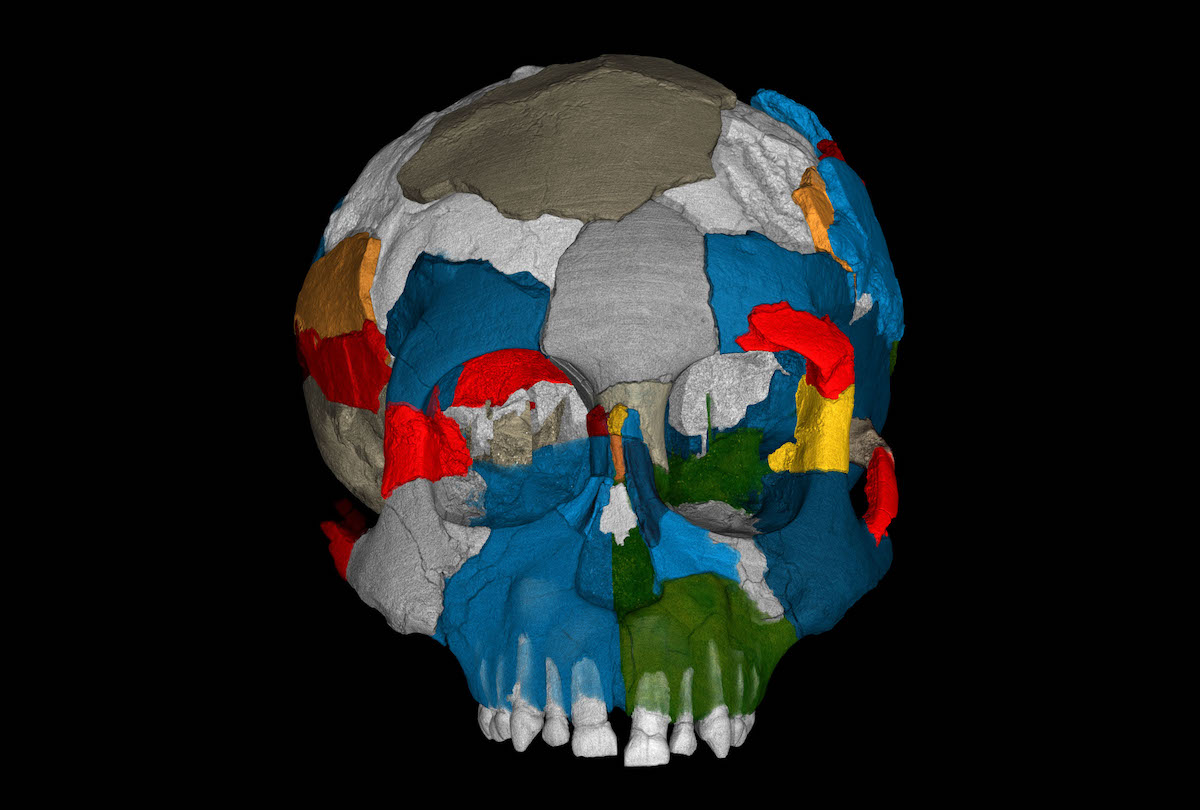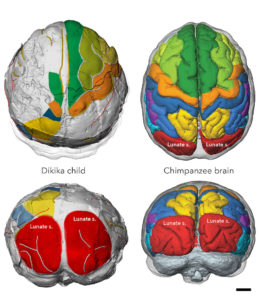
Three-million-year-old brain imprints in fossil skulls of the species Australopithecus afarensis (famous for "Lucy" and the "Dikika child'' from Ethiopia) shed new light on the evolution of brain growth and organisation.
New research published today in Science Advances reveals Lucy's species had an ape-like brain, but its protracted growth suggests that infants may have had a long dependence on caregivers.
Professor Tanya Smith from Griffith University's Australian Research Centre for Human Evolution co-led an international team in determining that the oldest known baby in the hominin fossil record was 2.4 years old when it died.
"We established this by counting the tiny time-lines preserved in its teeth, which is the only accurate technique for ageing young fossil individuals," Professor Smith explained. She recently published a popular science book, The Tales Teeth Tell, which details the many ways that dental studies provide insights into human behaviour, evolution, and development.
Microscopic growth lines revealed that the fossil australopithecine child was 20% younger than a previous estimate of three years of age, and when combined with the study of its brain size and shape, revealed an intriguing pattern of both ape-like and human findings.
"The study found that although its molar teeth grew rapidly like chimpanzees, its brain appeared to have grown more slowly, which would imply an extended childhood in a human-like direction."
Led by paleoanthropologists Philipp Gunz and Simon Neubauer from the Max Planck Institute for Evolutionary Anthropology (Leipzig), the researchers studied the brain growth and organisation in Australopithecus afarensis. They scanned the Dikika child using synchrotron microtomography at the European Synchrotron Radiation Facility (ESRF, Grenoble, France), that can reveal the age at death with a precision of few weeks.

The species Australopithecus afarensis inhabited East Africa more than three million years ago and occupies a key position in the hominin family tree, as it is widely accepted to be ancestral to all later hominins, including the human lineage.
"Lucy and her kind provide important evidence about early hominin behavior - they walked upright, had brains that were around 20% larger than those of chimpanzees and may have used sharp stone tools," said senior author Zeresenay Alemseged (University of Chicago), who directs the Dikika field project in Ethiopia, where the skeleton of this Australopithecus child was found in 2000.
These data shed new light on two questions that have been controversial: Is there evidence for human-like brain reorganisation in Australopithecus afarensis? Was the pattern of brain growth in A. afarensis more similar to that of chimpanzees or that of humans?
Contrary to previous claims, the endocranial imprints reveal an ape-like brain organisation, and no features derived towards humans. However, a comparison of infant and adult endocranial volumes nevertheless indicates more human-like protracted brain growth in Australopithecus afarensis, likely critical for the evolution of a long period of childhood learning in hominins.






